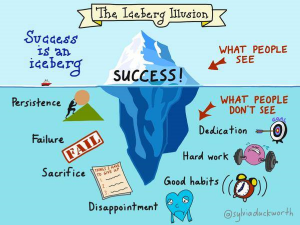CORE STABILITY
WAYS TO IMPROVE CORE STABILITY
What is core stability… basically it is the capacity of the muscles of the torso to assist in the maintenance of good posture, balance, etc., especially during movement. Core stability is the name given to the strengthening of the corset of muscles surrounding the back and abdomen. These muscles are also known as the core or powerhouse muscles and provide a solid base upon which all other muscles can work upon to initiate movement
Over the past few years, there has been increasing attention to the role of “core stability” in athlete training and preparation. Being strong through the trunk is critical in both developing good posture, and preventing back soreness and injuries. With reference to sport, core stability is vital to longevity and optimal performance, and is essential for air / positional shooters and very useful for prone shooters.
Core stability training starts with the basic position:
- Start by lying on your back with knees bent
- Your spine should be relaxed on the floor, aligned normally with a small gap between the floor and your back. This is the “neutral” position you should learn to achieve
- Breathe in deeply (belly breathing) and relax all your stomach muscles. Breathe out and, as you do so, draw your lower abdomen inwards as if your belly button is going down towards the floor. Hold the contraction for 10 seconds and stay relaxed, allowing yourself to breathe in and out as you hold the tension in your lower stomach area
- Repeat 5-10 times
Once you can complete this exercise successfully, then the concept can be combined in the following ways.
Crunches
 a) Lie on your back with your knees bent and your feet flat on the floor
a) Lie on your back with your knees bent and your feet flat on the floor
b) “Crunch” or curl your stomach to lift your shoulders just off the floor.
Try not to use your hip flexor muscles to carry out this movement, or use your arms to pull up your head.
The Plank
 a) Assume a front-support position resting on your fore-arms with your shoulders over your elbows.
a) Assume a front-support position resting on your fore-arms with your shoulders over your elbows.
b) Straighten your legs out behind you and lift up your hips to form a dead-straight line from your shoulders to your ankles. You should be balanced on your fore-arms and toes, with your lower abdomen and back working to keep your body straight. Hold for 1minute.
Oblique Plank
a) On your side, balance on your right fore-arm with your shoulder above your
b) With your legs out straight to the left, lift your pelvis so that you are balanced on your fore-arm and feet. Your body should form a straight line and you should feel the oblique muscles down the side of your trunk working to maintain the
Hold for 1 minute then repeat on other side.
Static Leg & Back
 a) Lie on your back with your knees bent and your feet flat on the floor
a) Lie on your back with your knees bent and your feet flat on the floor
b) Lift your pelvis so that you form a bridge position with a straight line running from your shoulders to your knees
c) Lift your right leg off the floor and extend it so that it continues the straight You should be able to feel your left buttock, your back, and lower abdomen working to keep the position.
Hold for 30 seconds then repeat on the other leg. Your hips should be level
Dynamic Leg & Back
a) Assume the same position as for the “Static leg and back”.
b) Lower your pelvis but do not allow it to tilt or touch the floor. This should be a slow, controlled movement.
c) Return to the original position, restoring the straight line from shoulders to toe
Aim to complete 10 with each leg. Stop if you feel the hamstring hurting at all.
 Swiss Balls are a great exercise tool to improve core strength and tone the entire body. They are inexpensive and widely used in back pain rehabilitation and injury prevention. Swiss Balls can help improve balance, coordination, strength, stability and posture. They are widely used by both athletes and patients and are frequently recommended by Physiotherapists.
Swiss Balls are a great exercise tool to improve core strength and tone the entire body. They are inexpensive and widely used in back pain rehabilitation and injury prevention. Swiss Balls can help improve balance, coordination, strength, stability and posture. They are widely used by both athletes and patients and are frequently recommended by Physiotherapists.
When used correctly, Swiss Balls can also help improve sitting posture and decrease the likelihood of posture related injuries, such as headaches, back pain and neck pain.
You can’t help but be impressed with that. Try improving you core stability, and see the benefits to your shooting.
- Contact your local Physiotherapist for more information.

